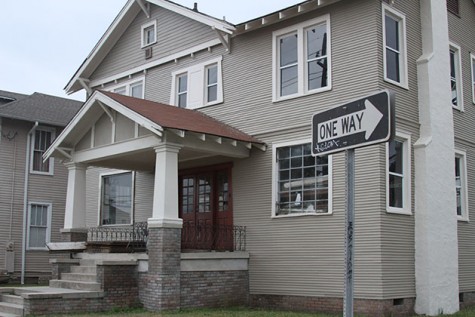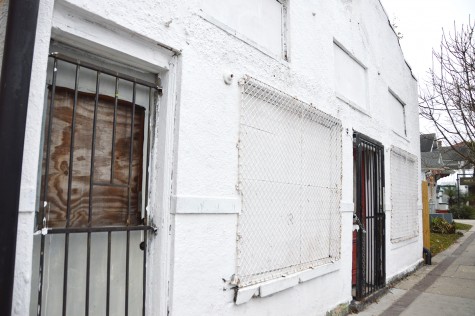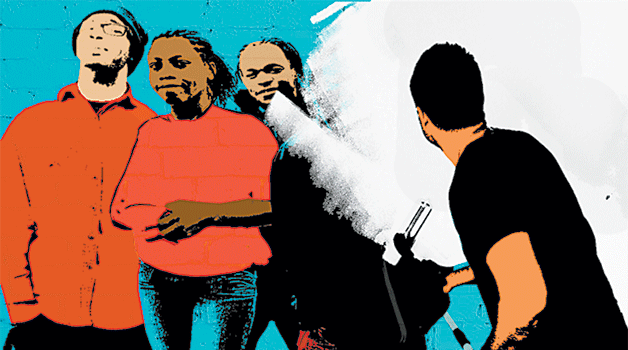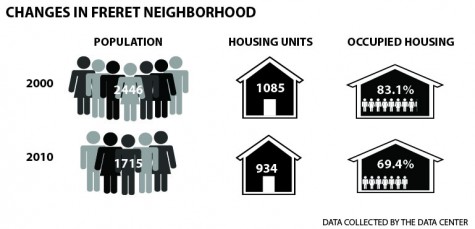The New Freret
Home and business owners in the Freret neighborhood find difficulties reclaiming their properties nearly 10 years after Hurricane Katrina
January 16, 2015
D’artanian Stovall, A’98 is one of many residents in the Freret community that have fought to keep ownership of their homes.
“Katrina left a bunch of people in a rough situation and we are 10 years out of Katrina. As you can see, I’m still rebuilding today,” Stovall said.
Stan Norwood, president of Neighbors United, said that the problem first started in 2007 and that there was an influx of cases in 2008.
“If you were underinsured, the property tax on your home would be too high for you to maintain ownership of your house as well as Code Enforcement leaving owners a fine for cracking down,” Norwood said. “Plus, back in 2008, jobs still weren’t available for residents to move back into the city.”
In Stovall’s case, his house was originally in his grandmother’s name. In 2003, his grandmother, mother and father passed away. Stovall’s grandmother never left ownership of the house to her children, making it hard for them to claim ownership of the house when there was no written document stating who the property belonged to.

D’artanian Stovall’s Freret Street property is currently undergoing construction. Stovall has worked on the property, which was heavily damaged by Hurricane Katrina, for over two years.
“My mom, my dad and my grandmother all passed away within six months. That took somewhat of a toll on the family,” Stovall said. “My siblings and I were left with the family home in 2003. I finished school in 2004 and then in 2005, Katrina came.”
Stovall said that he assumed his siblings would care for the house because they were still in the city, while he resided in Philadelphia following Katrina. When they did not, he returned to New Orleans because of threats from the city to take the property and sell it.
Norwood said there have been controversial aspects of reacquiring property in the Freret neighborhood within the past few years following Hurricane Katrina.
“From what we’re hearing is there are a lot of pre-Katrina residents who were not fully informed on how to rectify and restore their family homes. However, information had been freely given to newcomers to the neighborhood,” Norwood said.
Some original residents were not as lucky as Stovall, who fought with the Freret Housing Center’s property campaign committee to maintain ownership of his house from buyers who were interested in purchasing his property.
Celeste Dunbar, former owner of the Freret Street restaurant Dunbar’s Creole Cooking, came back to the city following Katrina, wanting to restore her heavily damaged restaurant, but she was unable to do so.
Norwood said Dunbar did not receive any proper information on how to rectify and restore her restaurant after it sustained damage.
“People bought it out, turned around, sold it and then sold it again,” Norwood said.
The property remains empty to this day.

The former Freret location of Dunbar’s Creole Cooking remains barred. The property was heavily damaged following Katrina.
Kellie Grengs, a costume director at Loyola said that she doesn’t think the statistics match up with the notion that current residents are being forced out of the neighborhood.
Grengs said the Data Center had “many findings that can disprove the notion that current residents are being forced out of the neighborhood.”
According to the Data Center, the population in the Freret neighborhood has fallen from 2,446 in 2000 to 1,715 in 2010 with the total number of households falling from 902 to 648.
From 2000 to 2010 the African American population decreased by 10.6 percent, while the neighborhood’s Hispanic and White population both increased by 4.9 and 5.2, respectively.
During this period, the total housing units also decreased by 13.9 percent with the number of occupied housing units decreasing by 13.7 percent.
Norwood said he thinks the entire community is going to be different in the years to come if the trend of buying houses continues.
“The people who are coming in don’t understand the nature and spirit of the city as someone who has lived here all their life. There shouldn’t be an echelon or a distinction between the people,” Norwood said. “We all are residents here, but you need to acknowledge there was a community that was already in existence here, and you should be trying to unite the community.”

